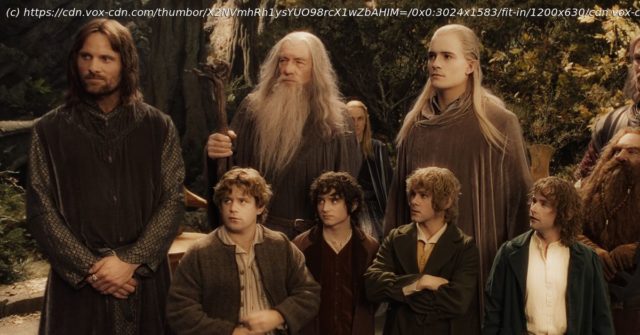Some of the best and most interesting books in the world have long been considered unfilmable, but those books also tend to make some of the best adaptations.
No one can quite agree on what makes a book unfilmable. Some books are thought to be too boring, plotless, or introspective; others are too interesting, exciting, imaginative, or complicated. The one thing people agree on, though, is that there are some books that should never, ever, be adapted into TV shows or movies. What makes the idea of unfilmable books fun, however, is that once in a while a project comes along that proves everyone wrong and adapts a difficult book into something new and good in its own right, with artistic value independent from the work it was based on.
Any adaptation from one medium to another is complicated. Turning books into movies involves translating words into images, trading in the explicitness of dialogue and descriptions on the page for the vague complications of actors conveying feelings and emotion. Books don’t have to obey the laws of physics or reality, and movies can capture subtler humanity in one glance or facial expression than many authors can on the page. With all these differences, even the most cinematic books have to undergo changes on the way to the screen, simply because of the different requirements and considerations for each medium — to go from a text-based medium to a visual one requires asking different questions and making new choices. But to do all of this with a work that doesn’t naturally lend itself to the screen — whether that’s because it’s too complicated, too fantastical, or simply too strange — is a truly staggering feat.
The history of these seemingly unfilmable projects is a tough one to track, because there’s no way to truly keep log everything that has been considered unfilmable — and that’s true even when limiting ourselves to mostly popular works in English. Instead, let’s take a journey through some of the biggest examples of books thought to be unfilmable, and some of the movies and TV shows that tried to tackle adapting them. Catch-22 (1970)
There were plenty of ambitious adaptations before 1970’s Catch-22, like Joseph Strick’s 1967 version of Ulysses, but where Catch-22 uniquely succeeds is how deeply it recognizes the fundamental difficulties of its story. Joseph Heller’s original Catch-22 novel tells the story of an Air Force pilot in World War II who is trapped into service by circular logic. The novel itself plays out mostly in unconnected and absurd scenes that slowly piece the narrative together by the end of the story.
Mike Nichols’ movie, however, takes a much more direct approach, telling one story that progresses chronologically. The movie follows John Yossarian and his quest to get discharged from the Air Force despite its rules that if he asked for discharge he’d be deemed sane and therefore fit to fly, just like the book. But communicating this complicated idea on screen means it has to be more centrally focused. Instead of playing through multiple plots, like Heller does, Nichols draws stronger connections between Yossarian’s story and the stories of the rest of his squadron. This lets the connections Heller only implied be seen much more clearly, giving us an early thematic understanding of the story that helps highlight the Air Force’s absurdity and the squad’s tragedy. It’s a careful and complicated transposing that keeps all of Heller’s core ideas intact while focusing on the tone of the original book, rather than devotion to every single plot point.
This might, fundamentally, be the starting point for all filmed versions of complex books that followed. What Buck Henry’s screenplay does best is boil Heller’s novel down into its most essential elements, pulling at its thematic chords and strings until something similar (but unique) is revealed. While the methods are certainly different, it’s not entirely unlike Alex Garland’s approach to adapting Jeff VanderMeer’s novel Annihilation. The adaptation shares characteristics and a few primary plot points with the original work, but discards nearly everything else in hopes of translating the book’s lurking evolutionary horror into a visual medium, much like Nichols and Henry’s primary concern for their movie was to capture the maddening absurdity that drives Heller’s story. Solaris (1972)
Based on the novel by Stanisław Lem, Solaris follows a group of scientists aboard a space station and their futile attempts to make contact with an extraterrestrial race. Rather than making contact with the aliens, they are instead faced with introspection and realizations about themselves and the human condition. If that all sounds a little too introspective for a clear-cut sci-fi movie, then you’re right. What makes this adaptation so difficult is how deeply reflective it is.
Director Andrei Tarkovsky finds a way around this in his film version, however, by going even deeper into his characters’ psyches and physical experiences in space. Much like Nichols’ Catch-22, Solaris is about adapting the spirit of the work, but where Tarkovsky finds new success is in translating those themes to a visual medium. Tarkovsky pushes Lem’s story further, giving us a brief view of the scientists’ lives on Earth before showing us the dank and cramped interiors of their space station for contrast. This allows Tarkovsky a window into the physical discomforts and uneasiness of space, giving him a visual and physical representation of the kind of psychological stress the characters are under too.
This approach, of giving a cinematic physicality to a deeply interior story, has proven to be a critical part of adapting difficult stories in the years since Tarkovsky’s version of Solaris was released. Mike Flanagan does something very similar in his adaptation of Stephen King’s Gerald’s Game, in which a woman is trapped, handcuffed to a bed, and starts to hallucinate after her husband dies on top of her. While King’s novel mostly zeroes in on the psychological side of her predicament, Flanagan blends that with a very real, and very graphic, physical strain of being handcuffed for dozens of hours, resulting in a successful adaptation — though not a particularly great movie. A Clockwork Orange
On paper, almost nothing about A Clockwork Orange seems to lend itself toward adaptation. The novel is full of graphic violence and sex, and written largely in author Anthony Burgess’ unique Nadsat slang — mostly a combination of cockney and Russian jargon. But somehow none of that stopped it from getting a fantastic translation to the screen.
Directed by Stanley Kubrick just a few years after 2001: A Space Odyssey, A Clockwork Orange is a remarkably faithful retelling of the novel. The main character, Alex DeLarge, is aged up from 15 to 18 (a luxury Kubrick didn’t have on his slightly less successful and perhaps even more challenging adaptation of Lolita nearly a decade earlier), but otherwise the events of the two versions of the story are nearly identical. Alex is a dangerous, classical-music-obsessed monster who roams around town with his friends committing horrible acts of destruction and violence. And then, after a brief stint in prison for his crimes, Alex is rehabilitated through a horrifying experiment that attempts to make him physically ill at the mere thought of violence or the old Ludwig Van — meaning Beethoven, of course. With all that objectionable content, the film ended up getting an X rating in the U.S. initially, only changing to an R when Kubrick edited some of the movie’s most explicit sexual content.






